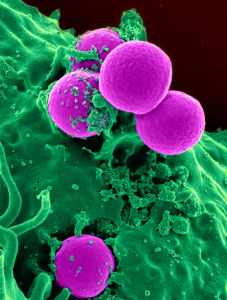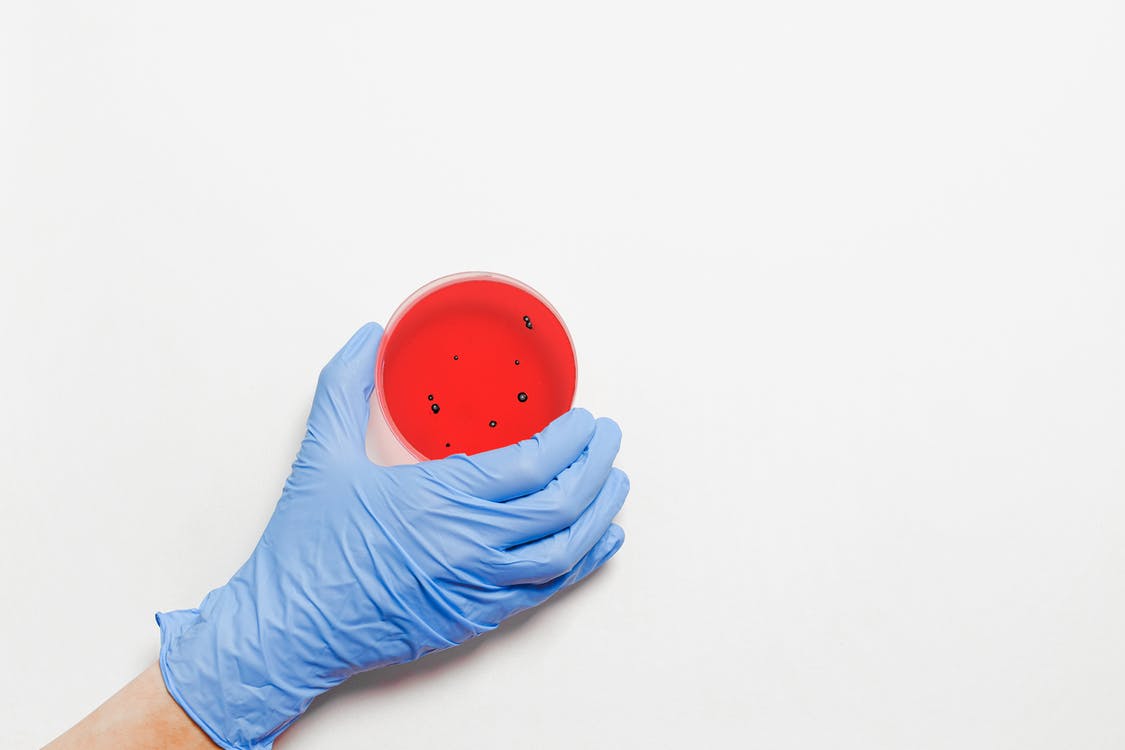Is staph infection contagious? Is that what you are searching for? Well, then let us tell you it is highly infectious, and it is best to avoid being around someone who is suffering from this problem.
It is an infection that is caused by staphylococcus bacteria. And it can cause several complications. So, today we are highlighting everything you need to know about staph infection and much more! Scroll down if you wish to know everything about it.
Table of Contents
What causes staph infections?
Bacterium Staphylococcus aureus is the cause of staph infections. You can spread this if you come in contact with an infected person. Even if you touch the same object (for example, books, desks, etc.) an infected person touches, you can contract the germs into you. Since you are curious to know is staph infection contagious or not, let us tell you it can spread very quickly to any person.
More so, 25% of individuals carry this germ in the mouth, nose, or foot, but they do not have the infection. Also, the foot is extremely prone to pick up staph from the ground. Some people can get infected by staph through a tiny cut they have in their body. They look like a yellow crust on the skin.
The infection can be a small boil, or it can be a flesh-eating infection. However, the difference between the infection is the strength, how fast it is spreading, how much deep it is in the body, and if it can be treatable with antibiotics.
But in a lot of situations, the antibiotic does not work on staph as they overuse antibiotics.
Cellulitis is a type of staph infection that goes into the skin’s deeper layers, but it is treatable with medicines and antibiotics.
It is a common infection that happens in people. However, it becomes severe for people who have a weak immunity system.

Is staph infection contagious? Who is more prone to it?
Staph infection is contagious, which includes both methicillin-susceptible staph (MSSA) and methicillin-resistant staph (MRSA).
Anyone who is suffering from any other illness is more prone to have this infection. People with diabetes and low white blood cells (neutropenia) are mostly infected with these bacteria if they are close to an infected person.
Some are other risk factors:
- Using the same stuff with the infected person
- Trauma
- Expose to people who are carrying or infected.
- Using drugs that are injected into the body
- Uncovered wounds
- Staying at the hospital
MSSA vs MRSA
MRSA and MSSA are two types of staph that are carried by most people on the skin and nose. Both of these types of staph infections are contagious. Most individuals do not even know that the bacteria are there as it is not harmful unless you have any cuts or wounds.
Moreover, the main difference is how they respond to the antibiotic – methicillin. This antibiotic was first invented in 1959 to treat infections.
MRSA is more dangerous than MSSA as it can resist the antibiotic. Later the health department developed vancomycin to treat MRSA. However, even vancomycin does not work on MRSA sometimes.
Also, both MSSA and MRSA can be severe, and the infection can be life-threatening.
Staph infection symptoms on the skin
Most of the time, staph cellulitis begins as a tiny area of redness, swelling, and tenderness. Sometimes it can start with an exposed cut. But at times, there might not be any break/cut on the skin.
Pain, warmth, redness, swelling, or any inflammation is a sign of cellulitis. Ulcer or skin sore that has these symptoms might develop into cellulitis. Furthermore, if it spreads, the person might have a fever and sweat a lot and get goosebumps.
One of the other infections on the skin is impetigo. It is a very painful rash, and this staph infection is contagious. Moreover, this happens a lot in kids and toddlers, known as staphylococcal scalded skin syndrome. It causes fever, rashes, and blisters.
More so, it can be a life-threatening infection if it reaches the inner lining of the heart (endocardium). Thus, it is important to know the location of the infection and how much severe it is.
Below is a detailed explanation of all the staph symptoms:
Food poisoning
One of the most common reasons for food poisoning is staph bacteria. Moreover, the signs start showing quickly, within few hours of consuming the contaminated food. But the signs disappear quickly as well, after lasting for a few hours.
Furthermore, staph infection from foods does not cause fever. Some of the signs you can see when this happens include:
- Low blood pressure
- Dehydration
- Vomiting
- Sickness
- Diarrhea
Bacteremia
It is also called bloodstream infection, and it causes when staph enters someone’s bloodstream. Low blood pressure and fever are the symptoms of bacteremia. Furthermore, once it reaches the bloodstream, it can go deeper into the body and cause more harm. It can go to:
- Muscles
- Bones
- Internal organs like lungs, heart, or brain
- Surgically implanted machines such as cardiac pacemakers or artificial joints.
Toxic shock syndrome
It happens when few strains of the bacteria produce toxins, and it might be linked to surgery, wounds, cuts, or tampons. Moreover, it can be life-threatening. It generally develops abruptly with:
- Vomiting
- High fever
- Diarrhea
- Muscle pain
- Confusion
- Nausea
- Stomach pain
- Rashes on the palm and on the soles, which looks like a sunburn
Skin infections
Some of the skin infections caused by staph are:
Boils
Boils are the most common staph infections. It develops in the oil gland or hair follicle. Most of the time, the infected area becomes swollen and red. Moreover, if it breaks open, then the boils will drain pus. The most commonplace for boils are under the arms and on the buttocks.
Staphylococcal scalded skin syndrome
Sometimes the toxins are produced due to staph, which might lead to staphylococcal scalded skin syndrome. It mainly affects toddlers and babies, and some of the signs are rashes, blisters, and fever. Moreover, when the blister breaks off, the top layer of the skin will come off. It leaves a red mark, and the raw surface resembles a burn mark.
Cellulitis
It is an infection that causes on the deeper level of the skin. The skin becomes swollen and red on the surface. Sometimes sores and oozing areas discharge might develop as well. Cellulitis needs to be treated immediately; otherwise, it can be serious.
Impetigo
Since we are answering your question, is staph infection contagious or not, let us tell it is, and this staph infection is painful. They form large blisters and might ooze fluid. Sometimes it develops a yellow-colored crust.
Septic arthritis
Staph bacteria sometimes cause septic arthritis. Moreover, the bacteria mainly target the fingers, hips, knees, toes, and shoulders. Some of the signs are:
- Fever
- Extreme pain in the joint that is affected
- Swelling of the joint

Treatment for the staph infection
Most of the time, doctors use antibiotics for the treatment of the infection. But there have been some changes in how well the antibiotics work. Even though most infections are treatable with penicillin, but sometimes stronger antibiotics are used.
Also, the antibiotic depends on what type of staph infection one has, which is methicillin-susceptible staph (MSSA) or methicillin-resistant staph (MRSA).
However, in almost 50% of the cases, resistance is has seen even though the doctors use stronger antibiotics. Moreover, they are not only happening in the hospitals but also happening within common people.
The main problem is that most doctors used an only certain type of antibiotics and is familiar with the components. There are more potent antibiotics available now, but many doctors do not know when to use them to prevent any further damage.
However, if the staph infection goes deeper in the body, such as fibers or muscles, it needs to be cleaned surgically.
| Antibiotics used to treat the staph infection |
|---|
| Cefazolin |
| Dalfopristin |
| Linezolid |
| Dalbavancin |
| Oritavancin |
| Vancomycin |
| Tigecycline |
| Ceftaroline |
| Dicloxacillin |
| Doxycycline |
| Telavancin |
| Minocycline |
| Trimethoprim-sulfamethoxazole |
| Clindamycin |
| Daptomycin |
| Nafcillin |
| Quinupristin |
| Tedizolid |
| Cefuroxime |
| Vancomycin |
| Delafloxacin |
If someone uses intravascular devices, then they should be removed. Sometimes surgery is needed to treat the infection:
- Debridement or drainage of abscesses
- Removal of the prosthetic device for staph infections, including a prosthetic joint
How long is staph infection contagious period?
Let us check how long is staph infection contagious:
- Most of them are cured when an antibiotic is used. And most of the staph skin conditions are not contagious after a day or two of the treatment.
- Some of the skin infections might take a longer treatment, mainly those which are caused due to MRSA.
- For the other type of infections, such as food poisoning, the person becomes healthy again when the staph infection is cured.
Can staph infections be prevented?
Since staph infection is contagious, the infected person needs to be cautious. If you see any wound or cut on your skin, then wash it with plain water, or you can use some antiseptic. You can use chlorhexidine or hypochlorous acid. Both are easily available at any medical store.
Always keep the area dry and clean and make sure it is covered all the time. Also, a diluted bleach shower or bath once a week might help you to stop the skin infection.
How to diagnosed staph infection?
The infection can be diagnosed with genetic history, blood test, and a physical test. Sometimes the doctors do imaging tests as well.
Blood test for the infection includes:
- Blood cultures
- Complete blood count
- C-reactive protein level and Erythrocyte sedimentation rate
- Multiplex PCR
- Peptide nucleic acid fluorescence in situ hybridization (PNA FISH)
- Screening tests for MRSA
Imaging Tests for the infection include:
- Transesophageal echocardiography (TEE)
- Transthoracic echocardiography (TTE)
When to consult a doctor?
You should go to see the doctor if any of your family member or you have:
- Fever
- Blisters filled with pus
- Area that is painful, red, and irritated
- You might as well consult the doctor if:
- More than one person in the family has the same skin infection at the same time.
The doctor might prescribe some oral antibiotics to treat the skin infection. It might take few days to get rid of the infection.
If it’s serious, then the infected person needs to be admitted to the hospital. For a pocket of pus or abscess, if home care is not working, it might need to be drained at the hospital.
To stop it from spreading to other body parts, one should be cautious, for example:
- Do not touch the infected area directly
- Only use a towel when you are drying or washing the infected skin. After each touch, you need to wash the towel, preferably in hot water.
- Keep the skin covered most of the time.
Can dogs get staph infection?
The infection develops in a dog when they excessively scratch, chew or lick any of their body parts. Staph infection is very common in dogs, especially if they are allergic to food and environmental factors.
Also, some other factors include fungal or bacterial infections and chronic debilitating diseases. Moreover, a staph infection can happen to any dog at any age. However, older dogs are more prone to it as they have a weak immunity system.
There are some common signs that a dog shows when they have a staph infection. Which are:
- Pain
- Eye and ear infection
- Problems with respiratory system
- Excessive chewing and itching
- Irritated and red skin
- Skin peeling
- Loss of fur
Is staph infection contagious from dogs to humans?
Staph infection can transfer from a dog to human and also from a dog to dog. The veterinarian will mostly prescribe an oral antibiotic to the dog. Sometimes they also prescribe anti-bacterial shampoo and antiseptic cream.
Moreover, it takes more than two-three weeks before the situation is under control. Also, it is vital you tell the veterinarian about all the supplements the dog is taking.
Final Thoughts
As we end our article, ”is staph infection contagious”, you know how dangerous it can be. The staph bacteria can cause minor skin issues, but if it goes deeper into the body, it becomes dangerous.
If someone has a staph infection, it is important; they keep the area clean and dry all the time. Moreover, if the infection does not go away within few days, it is necessary to consult the doctor.

